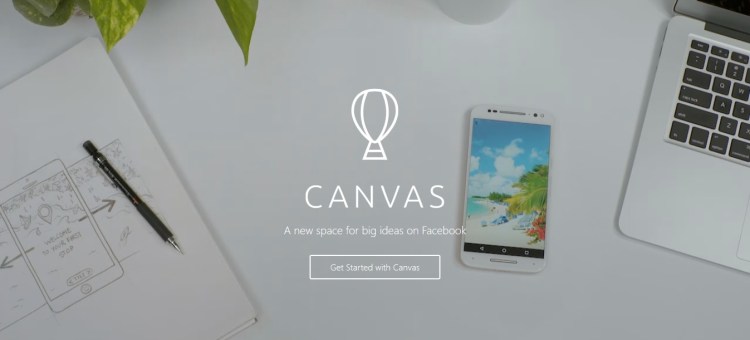Facebook’s recent quarterly earnings showed just how important mobile has become to the company, with mobile advertising making up a significant chunk of the company’s 52 percent jump in revenue. Facebook is clearly investing in improving the mobile ad experience, and Canvas – its new mobile ad unit — is a great example of that investment.
Being rolled out this month, Canvas ads appear as sponsored posts in Facebook’s newsfeed. The difference in this ad unit appears when you tap the post. Instead of taking you to an external site, you’re taken to a Facebook-hosted full page take-over experience, where you can flip and scroll through original content. Canvas is also optimized for mobile and loads faster than Facebook’s other mobile ad units.
Canvas is shaping up to be the most expressive and immersive Facebook ad unit to date thanks to its ability to allow a brand to break through the clutter, tell a different story in a branded environment, and hook consumers with fresh content.
Creating Canvas content, however, will cost brands quite a bit of time and money. And, as with any new ad format, it will take some experimenting before marketers figure out how to use Canvas to its full potential.
Here are three ways to take advantage of this fresh format while keeping your production costs in check:
1. Go wide with imagery: One exciting feature in Canvas is the “tilt to pan” capability that lets you explore the scene beyond the border of the device by tilting your mobile screen. Brands will want to use this technique to engage users and increase time spent within the ad. While you can use this technology on any image, the best scenario is to use “tilt to pan” when you have content that delivers extra benefit to users when they explore it further.
Carnival, one of the first brands to test out Canvas, does this very effectively by giving users a wide angle look at the lush white sand beaches and clear water of Grand Turk. You can see how Carnival leads into the “tilt to pan” by pulling the scene down and enticing the user to tilt left and right:
BMW is also using Canvas to give people a look inside its new 7 series using this approach.
At photoshoots, make sure to include in the shot-list a supply of super wide shots as this is an easy and inexpensive way to create strong content for Canvas.
2. Think of brand storytelling through multiple mediums: Consider lowering the overall production cost of your Canvas ad by smartly mixing video, imagery, and text. Think critically about what type of mediums are best for the messages you want to deliver. Product facts, comparisons, and data-heavy analysis are best conveyed in thoughtfully constructed graphs and infographics. On the other hand, brand stories, concepts requiring emotional connections, and claims of authenticity are all usually well suited for photos and video.
Additionally, Canvas ads give you the unique ability to discover content both horizontally and vertically, allowing for rich storytelling using multiple mediums. Take this example by Wendy’s that uses both beautifully produced static images and lower-cost video seamlessly integrated to make an engaging ad:
Many have said that a picture is worth a thousand words, but the right combination of both in storytelling is priceless.
3. Create content in snack-able bites: When creating longer form video content such as a commercial or short film, break it into shorter videos or use outtakes to create mini-episodes, ideally edited to 15- or 20-second clips. These pieces of content are much easier to consume when experiencing a Canvas ad and can help better illustrate your brand’s storytelling objective.
A great example of breaking longer form video into shorter pieces was done by Evan Williams’ Bourbon as part of a recent social media video campaign they ran. They saw video views go up dramatically with close to 70% completion rates, and users always watched past the key brand messaging. Below is one example of their videos, and you can find the complete series here.
Facebook’s continued commitment to making mobile more and more effective is welcome. There’s always the risk that, once a company finds a successful formula, it will stop innovating (and given its recent earnings, Facebook seems to have cracked the mobile monetization code). That doesn’t seem to be the case here — Canvas has the potential to create a greater level of mobile engagement with consumers – and could signal a new wave of innovative storytelling.
MichaelAaron Flicker is president of ad agency XenoPsi.
VentureBeat's mission is to be a digital town square for technical decision-makers to gain knowledge about transformative enterprise technology and transact. Learn More

